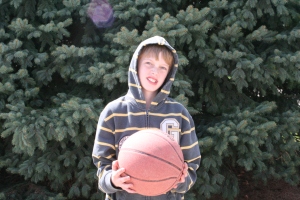 What does a professor DO? My answer to this question changes as a function of when you ask me—at different times of the academic year and developmentally at different times in my professional career. I began to address this question in my first blog for the Milwaukee Journal Sentinel in October of 2007 when I was trying to explain to my father that a professor does more than sit in his office and read books (what a heavenly thought though). At that time I had the pleasure of being one of their online educational community columnists for a year.
What does a professor DO? My answer to this question changes as a function of when you ask me—at different times of the academic year and developmentally at different times in my professional career. I began to address this question in my first blog for the Milwaukee Journal Sentinel in October of 2007 when I was trying to explain to my father that a professor does more than sit in his office and read books (what a heavenly thought though). At that time I had the pleasure of being one of their online educational community columnists for a year.
One of the major demands on my academic life over and above teaching six classes per year, serving on committees,engaging in scholarly activity, academic advising, and mundane organizational responsibilities is writing letters of recommendation—an important task which consumes increasing larger amounts of my time. Having been a faculty member at Carroll for more than thirty-five years, I have gotten to know and be known by an increasingly larger number of students, staff, faculty, and alumni. I receive an unusually large number of requests from former students who graduated a number of years ago and who now are changing life directions (I truly welcome hearing from you—not only when you need something from me:)). The venue of these requests has changed from being asked in person and (in advance) to materials being placed under my office door, email, social media, telephone calls, Face Book messages, email forms from graduate programs–and occasionally via owl! I must admit I like staying in touch with former students, and the ways I keep connected with them have multiplied with the of use of email and the increased use of social networking tools such as Face Book and Linkedin and David-in-Carroll-land.
There are temptations to streamline, to cut corners, become more efficient, achieve that elusive goal of an empty email box. I conservatively estimate that I was called upon to write 5-6 letters for at least 75 individuals this past year. Easy solutions which come to mind (some of which I have experimented with) include using a template or form letter, using a rating scale or check list, keeping the letter short, limiting the number of letters written per student, being very selective about for whom I write (—or just saying NO), limiting the amount of time written per letter, limiting the format to twitter restrictions of 140 characters, using a haiku format, and/or teaching students ways that they can make my letter-writing easier. Alas, I wish that I were able to follow my own advice!
There exists quite a literature of the art (how does one write convincing letter?) and science (how valid and reliable are they?) of writing letters of recommendations. One of my favorites that I return to time and again immortalizes some ambiguous phrasing I strive to avoid—but am often tempted to use.
Time to go to a meeting of the Board of Trustees in my capacity as a Faculty Oberver to the Board. This will probably be the last time I serve in this interesting capacity at Carroll. I’ve enjoyed getting to know and be known by these dedicated people.
Hope I can stay alert; it was quite late when we returned from the Brewers/ Yankees game at 1:00 a.m! Maybe I’ll plug into this song on my headphone.















